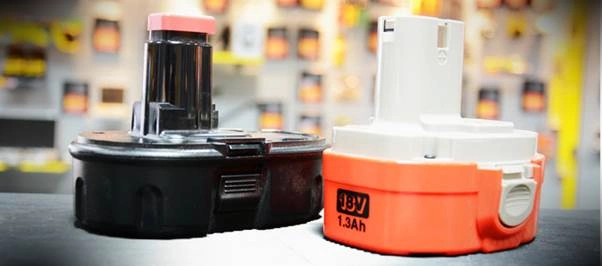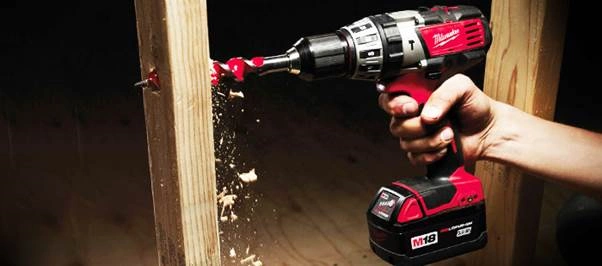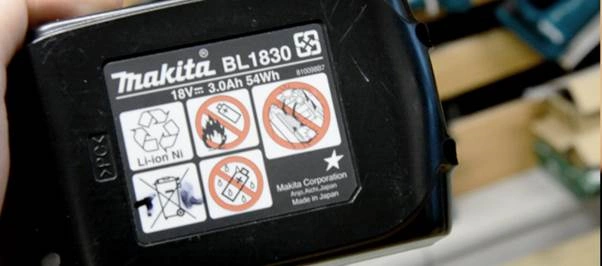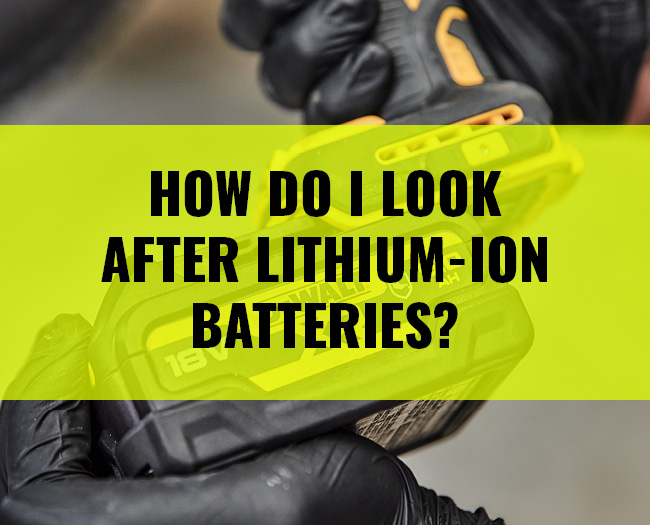In this post I hope to give you a run-down of the customer feedback we get here at ITS regarding Li-ion Power tool batteries, we also have some suggestions as to how to get the most out of them and hopefully make them last longer.
I suspect that if you’re reading this then you’re one of two types of people. Either you’re looking at the title and thinking “well it’s a battery, you use it, you charge it, you use it again” (and in the style of a well-known Russian Meerkat) “Simples” or possibly you’re someone that has had plenty of trouble in the past with batteries or you’ve heard of friends and colleagues that have had nothing but grief from them and therefore you’re reluctant to spend your hard earned money until you know how best to look after them.
Well for those of you that are fans of Makita, this video from ITS TV runs through some of the best practises for looking after your batteries.
Why do my Li-ion Batteries have issues?
There are two main reasons for lithium batteries to give up the ghost. The first issue is heat. Heat is a battery’s worst enemy, if a battery gets too hot then it’s CPU and fuel cells will burn out, rendering the battery useless and your day on site redundant. Second is over discharge. Over discharge occurs when your battery is on the brink of running out of juice completely and whichever machine you’re using beings to fade. But instead of stopping (and yes we’ve all done it) and charging that battery up you decide to squeeze every single last breath out of the battery and force your way through the job manually.
This sort of practise may save you time but also, it’ll possibly cost you an entire Li-ion battery. Because it’s completely bled dry it has no power to communicate with its charger the battery won’t be able to gain a charge and you won’t be able to ever use it.
How do I stop my Lithium battery from getting too hot?
Now there isn’t really a scientific answer to “how hot is too hot?” for a lithium-ion battery, so I’ll have to leave this one in your hands. Of course, pushing your tool beyond its recommended limits, (whether that’s using a massive Auger bit or sawing through reinforced material) is a bad idea. These tools are tested by the manufacturers and the spec sheets are there to tell you what your machine is capable of. Anything you attempt outside those limitations could have a very negative affect on the inside of your tool and moreover your battery. Furthermore if you’re using a machine for a long time continuously or a high drain tool like a jigsaw or circular saw then it’s worth using your judgment to see if your batteries are starting to overheat.
How to prevent over-discharge on li-ion batteries
As mentioned above, over discharge happens when you push your batteries to their absolute limits, to the point where it doesn’t have enough power to even communicate with the charger. So it’s pretty obvious that the best way to avoid this from happening is as soon as you feel that your tool/battery is starting to struggle – get it on a charger! Don’t squeeze those extras 10 screws out of it, or cut that last 100mm of timber, just get it out and get it on charge!

Is Li-ion different to Ni-CD?
For those veterans amongst you, you’re probably reading the above and thinking that’s its blasphemy and although it wasn’t ever particularly good practise (because the tools weren’t designed to do that) if your power tool battery was starting to run low then plenty of people would walk around site with their fingers on the trigger making sure that you run it down as much as possible before charging. You used to see that sort of thing a lot (although again it certainly isn’t recommended) with Ni-CD because they had a ‘memory for charge’ which meant that whenever you charged it, it created a ‘minimal charge point’ from that exact point. So, if the battery had 25% of juice left and you charged it, you’d only ever get the remaining 75% from it thereafter.

Do not fall into the trap of doing that with Li-ion batteries! They work completely differently and you can charge them at any point and they’ll still retain their full charging capacity. So for the sake of 2 mins of swapping your battery out for another one – or even waiting around with a brew for 20 mins while it charges, please make sure you don’t push your battery too far and get it on charge before ruining it forever.
The future of power tool batteries

Most brands these days are have created ‘fail-safes’ within their tools and batteries so that they don’t actually allow users to over-discharge their batteries by cutting out as soon as the battery beings to struggle. It’s very much the same with heat, the same thing happens if a battery gets too hot, the tool will just shut down and not allow the battery to be used until it has cooled down. These fail safes take that grey area and the choice away from you the consumer, letting you get on with what’s important and what you’re good at.
Makita Stars on Tools and Batteries

To focus on the Makita ‘fail safes’ they have put a chip in their latest tools and batteries. You can tell whether or not your tool/battery has got this chip in because it’s represented by a small ‘star’ engraved into the underside of the battery compartment on a tool, or pictured on the side of your battery. These chips talk to one another and convey exactly what I was talking about above – If the battery is being over worked and therefore getting too hot, it’ll cut all power to the battery. Moreover, if the battery is losing power and about to run out of juice, it won’t let you run it flat it’ll just stop all power going to the machine.
Please note that these fail safes only work this way if BOTH your battery and machine are ‘starred’ products. You may have some existing non-starred batteries and put a starred machine on them, if this is the case then the chip in the machine doesn’t have a corresponding chip to ’talk’ to and so the fail-safe is not in place. The same is true if your battery is a newer ‘starred’ battery but your power tool doesn’t have a star on it.
If you would like any further information on the Makita Stars or to find out about a particular model no please email us on [email protected] and we’ll get back to you asap.

Hopfully that gives you a good idea of how and why li-ion batteries may fail on you, and what you can do to prevent that from happening.
If it has been handy then please share it around using the buttons below, and if you have any questions please leave a comment or call 020 8532 5000.



